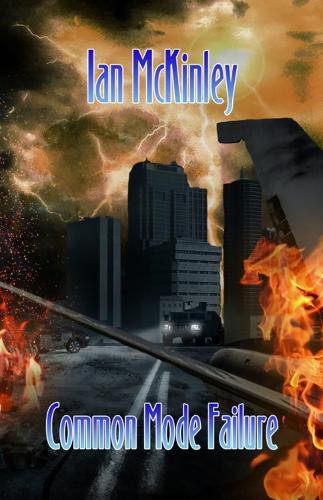Readings Newsletter
Become a Readings Member to make your shopping experience even easier.
Sign in or sign up for free!
You’re not far away from qualifying for FREE standard shipping within Australia
You’ve qualified for FREE standard shipping within Australia
The cart is loading…






This title is printed to order. This book may have been self-published. If so, we cannot guarantee the quality of the content. In the main most books will have gone through the editing process however some may not. We therefore suggest that you be aware of this before ordering this book. If in doubt check either the author or publisher’s details as we are unable to accept any returns unless they are faulty. Please contact us if you have any questions.
In the mid 21st century, common mode failure results from a huge electro-magnetic pulse from the sun, dwarfing anything seen in recorded history. This destroys all unprotected electrical or electronic equipment which, with 70% of the world’s population living in urban areas, effectively removes all services required to support them. Although there is immediate decimation of populations in vulnerable areas, over a longer term the impacts are even greater as urban areas become uninhabitable, the basis for high-tech agriculture and fishing is lost, communication and transport infrastructure vanishes and medical services collapse. This inevitably leads to local breakdown of society, famine and plagues, leading to regional scale conflicts - a true Four Horsemen apocalypse.
The novel focuses in particular on two contrasting situations - a university department located in the Japanese city of Nagoya and the tourist community of Cupecoy in the Caribbean holiday island of Sint Maarten. In both cases, individuals fight to understand what has happened and find solutions to avoid otherwise inevitable collapse into anarchy. This is put in context by vignettes from other locations around the globe.
Initial struggles to survive on a local and regional basis slowly develop into projects to rebuild, with the aim of avoiding the errors of the past. This requires acknowledgement that the over-populated planet cannot be supported by technology that is closer to the early 20th century, so the deaths of billions is unavoidable - made only worse by the impacts of a globally-warmed climate. As if this was not bad enough, those fighting to speed recovery need to fight against others interested only in gaining from the chaos - from the depredations of a new breed of pirates in the Caribbean to attacks on the remaining nuclear hard communication system by jingoistic conspirators at the highest level of the US military.
$9.00 standard shipping within Australia
FREE standard shipping within Australia for orders over $100.00
Express & International shipping calculated at checkout
This title is printed to order. This book may have been self-published. If so, we cannot guarantee the quality of the content. In the main most books will have gone through the editing process however some may not. We therefore suggest that you be aware of this before ordering this book. If in doubt check either the author or publisher’s details as we are unable to accept any returns unless they are faulty. Please contact us if you have any questions.
In the mid 21st century, common mode failure results from a huge electro-magnetic pulse from the sun, dwarfing anything seen in recorded history. This destroys all unprotected electrical or electronic equipment which, with 70% of the world’s population living in urban areas, effectively removes all services required to support them. Although there is immediate decimation of populations in vulnerable areas, over a longer term the impacts are even greater as urban areas become uninhabitable, the basis for high-tech agriculture and fishing is lost, communication and transport infrastructure vanishes and medical services collapse. This inevitably leads to local breakdown of society, famine and plagues, leading to regional scale conflicts - a true Four Horsemen apocalypse.
The novel focuses in particular on two contrasting situations - a university department located in the Japanese city of Nagoya and the tourist community of Cupecoy in the Caribbean holiday island of Sint Maarten. In both cases, individuals fight to understand what has happened and find solutions to avoid otherwise inevitable collapse into anarchy. This is put in context by vignettes from other locations around the globe.
Initial struggles to survive on a local and regional basis slowly develop into projects to rebuild, with the aim of avoiding the errors of the past. This requires acknowledgement that the over-populated planet cannot be supported by technology that is closer to the early 20th century, so the deaths of billions is unavoidable - made only worse by the impacts of a globally-warmed climate. As if this was not bad enough, those fighting to speed recovery need to fight against others interested only in gaining from the chaos - from the depredations of a new breed of pirates in the Caribbean to attacks on the remaining nuclear hard communication system by jingoistic conspirators at the highest level of the US military.